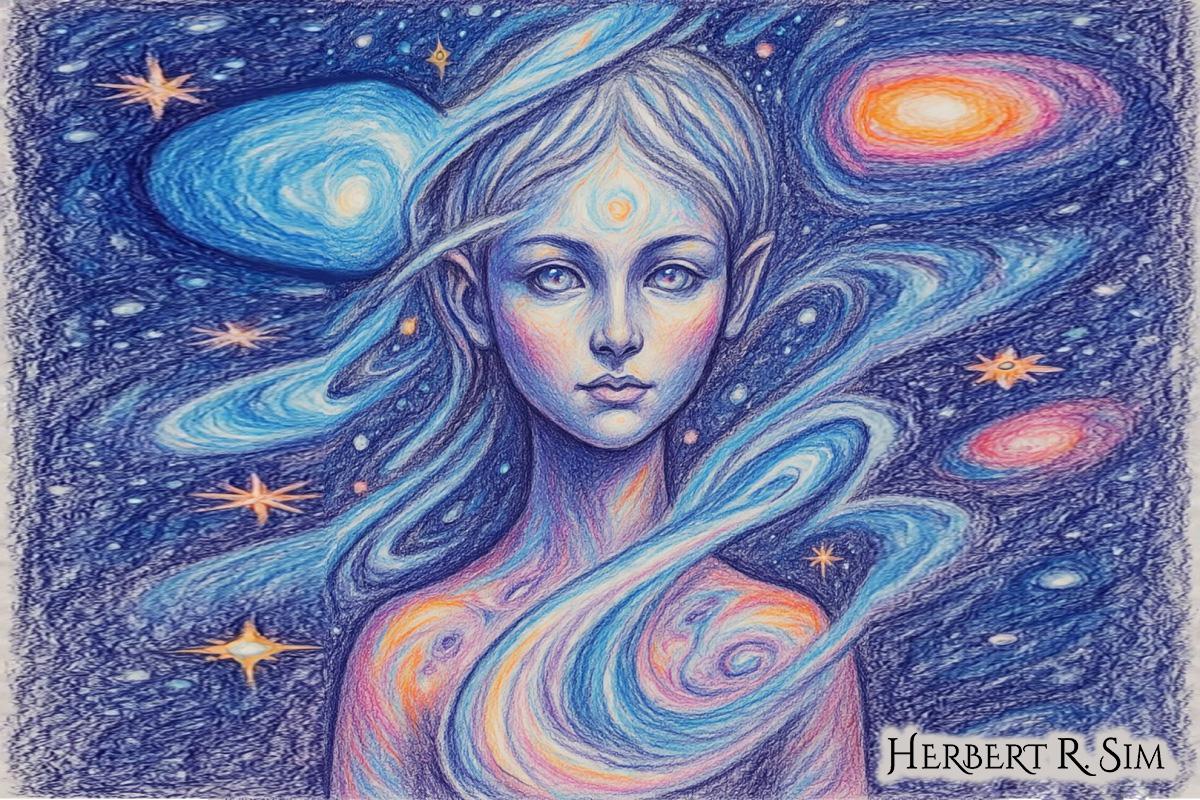
Once the fourth dimension is understood as a mathematical or physical concept, a natural question arises: what would a fourth dimensional being be like? This question has fascinated scientists, philosophers, and artists for generations, bridging mathematics, physics, and metaphysical speculation.
Conceptual Foundation
A 4th-dimensional being is generally conceived as an entity that exists in four spatial dimensions, or in the physics sense, as an entity with full awareness of spacetime. Analogies help:
- A 2D being, living in a flat plane, would be unable to perceive objects outside its plane. A 3D being can observe and manipulate the 2D world fully.
- Similarly, a 4D being would perceive and manipulate the 3D world in ways humans cannot comprehend. It could see all sides of a 3D object simultaneously, enter enclosed spaces without obstruction, and move through our world as easily as we move through a sheet of paper.
Mathematical Perspective
In mathematics, a 4D being is hypothetical but useful for understanding higher-dimensional objects. Examples include:
- Tesseracts: 4D analogs of cubes. A 4D being could see the tesseract in its entirety, whereas humans can only perceive projections.
- Hypercubes and Hyperspheres: Complex 4D shapes that obey extensions of 3D geometric principles.
Mathematicians and computer scientists model such beings using four coordinates, allowing simulations of their potential motion and interaction with a 3D world.
Physics Perspective
In relativity, considering time as the fourth dimension, a 4D being might experience all points of spacetime simultaneously.
- Such a being would perceive past, present, and future at once, potentially understanding causality in ways humans cannot.
- Its interactions with our 3D world would appear almost miraculous, as it could anticipate outcomes and move through objects in ways consistent with spacetime geometry.
Spiritual and Metaphysical Interpretations
Some philosophical and spiritual traditions interpret 4D beings as higher consciousnesses or spiritual entities. In this view:
- They exist beyond the physical plane.
- They can interact with human thoughts, emotions, or the “flow” of events.
- They inspire mythologies and ideas about angels, spirits, or omnipresent entities.
While not scientifically proven, these interpretations reflect humanity’s attempt to conceptualize existences beyond our perception.
Cultural and Literary Depictions
Science fiction and literature frequently explore 4D beings. Examples include:
- H.G. Wells’ “The Time Machine,” where temporal perception is extended into a fourth dimension.
- Flatland by Edwin Abbott, a story using dimensions to explore perception, hierarchy, and morality.
- Modern sci-fi imagining omniscient beings manipulating reality across space and time.
Implications
- Scientific Thought Experiments: 4D beings help model higher-dimensional geometry and physics.
- Philosophical Inquiry: Raises questions about free will, determinism, and perception.
- Inspirational for Creativity: Inspires art, literature, and imaginative exploration of realities beyond human senses.
Conclusion
A 4th-dimensional being challenges the limits of perception, cognition, and imagination. Whether considered a mathematical construct, a theoretical spacetime entity, or a spiritual consciousness, the concept expands our understanding of reality. It pushes us to envision existence beyond three dimensions, offering insights into both the universe and the nature of perception itself.
